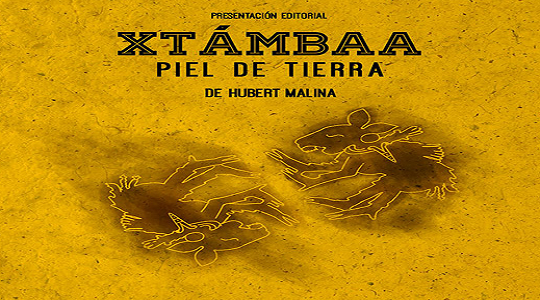In a 2015 Washington Post article on the state of world languages, Rick Noack and Lazaro Gamio note that of the roughly 7000 languages currently spoken on the planet, almost half that number—some 3500—are expected to die out by 2100. Although the authors themselves do not make such a connection, when they state that “Linguistic extinction will hit some countries and regions harder than others,” the areas they designate as those that stand to be hardest hit (Native American reservations in the Western and mid-Western US, the Amazon rainforest, sub-Saharan Africa, Oceana, Australia, and Southeast Asia) coincides roughly with a map of where global capitalism has increasingly sought to expand its reach into indigenous communities during the first few years of the 21st century. As evidenced by conflicts such as #NoDAPL in the US and the dynamiting of a sacred Munduruku site to make was for a dam in the Brazilian Amazon, the extinction of languages and cultures all too frequently goes hand-in-hand with state sponsored development projects that forcibly eject indigenous peoples from their ancestral lands in the name of national progress. When one comes to an understanding that language death is as much an economic as it is a cultural phenomenon, where do indigenous peoples, cultures, and languages fit within 21st century nation-states, if at all?
In comparison with many other countries in Latin America and the rest of the world, contemporary indigenous literatures from Mexico are notable precisely for this delicate dance between the Mexican state, a major sponsor of indigenous literatures since the late 1970s, and indigenous authors whose literary, linguistic, and political aims tend to diverge from those of their state-sanctioned patrons. In particular, the bilingual format of virtually all indigenous literatures published in Mexico during the past 40 years speaks to the realities of a complex relationship in which authors seek to represent themselves to themselves and their communities in their native languages, while simultaneously making these same selves intelligible to non-indigenous outsiders living in their same country.
This background is important if one is to understand the nature of the achievement of Hubert Malina’s poetry collection Xtámbaa—Piel de Tierra (Earthen Skin). The most recent edition to Pluralia Ediciones’ list of contemporary Mexican indigenous literatures, Xtámbaa is the first volume of poetry to be published in the Me’phaa (Tlapanec) language. Despite the fact that the Mexican National Institute for Statistics and Geography lists Me’phaa as having just over 134,000 speakers as of 2015, a glance at UNESCO statistics published in The Guardian reveals that this number hides the fact that eight variants of Me’phaa are recognized as being “vulnerable” or “severely endangered.” As a challenge to its Spanish-language readership, perhaps, Xtámbaa’s bilingual format inverts the power dynamic betweem Me’phaa and Spanish. Instead of having the Me’phaa and Spanish texts separated into two distinct sections, in essence an indigenous language work and its translation, here individual poems are presented as a Me’phaa-language text followed by a Spanish text, a move that forces even the monolingual reader of Spanish to look at (if not read!) Me’phaa, thereby experiencing it as a living language.
Further, the work’s content itself does not shy away from the difficulties faced by Me’phaa and its speakers, as the very title of the first section, Tsínúu a’ó or My Scarred Voice, makes clear. That is, Malina’s work seeks to undermine the very colonial legacies that have historically denied indigenous people a voice. For example, in the poem La palabra or The Word, “When speaking the sad words of our grandparents/ we say: the word that watches/ that protects, that lives.” The contradiction, of course, is that the mother tongue of the ancestors is “sad,” and yet remains a foundational way of being in the world that not only “protects” members of the community but itself also “lives.” Perhaps nowhere in the volume is this sense of language as the lifeblood of one’s community and memory more poignant than in the series of poems from which the work takes its title, given that this is dedicated “To Mauricio Ortega Valerio, disappeared September 26, 2014 in Iguala, Guerrero.” In other words, the work is dedicated to the memory of one of the forty-three young students from the Ayotzinapa Rural Teachers’ College who were kidnapped and presumably murdered. In Part V we are told that the poet’s “voice became a nest/ the day they took you,” as, through the poem itself, the missing man becomes reborn through nature, “your earthen feet holding my Me’phaa voice”. In a gesture no doubt familiar to readers of Native American writers such as Laguna Pueblo author Leslie Marmon Silko, a footnote to the Me’phaa language poem alerts the reader to the fact that xtámbaa is actually the name of a ceremony called “piel de tierra” or “earthen skin.” As has been noted countless time with regard to Silko, this in effect articulates the book itself as the titular ceremony in which the astute reader is invited to participate insofar as the footnote only appears accompanying the Me’phaa text. That is, Spanish is not enough, and one must at least peruse the Me’phaa whether or not one understands it. Reaching across languages and cultures, Malina’s text thus situates itself as a powerful reminder of colonial legacies of violence and oppression, seeking an intercultural dialogue in which Me’phaa has the right to be spoken and read in Mexico and beyond.
*****
Read More Reviews:

